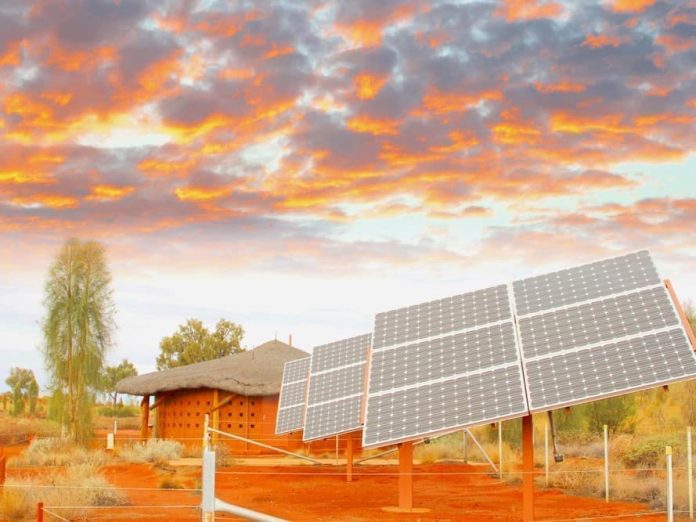
The African continent it at a critical turning point. The region’s energy demand is set to skyrocket just as climate change is starting to impact local livelihoods in earnest.
African countries are among those most vulnerable to climate change despite having contributed the least to the climate crisis. Faced by a sharp population growth, and a need to develop local and national economies, Africa also must simultaneously contend with the urgent imperative to keep emissions in check. It’s a tall order. Indeed, Africa is a perfect example of what is known as the energy trilemma: the tricky problem of creating enough energy while also keeping that energy sustainable and affordable.
What makes Africa’s situation so unique and so dire is the intense scale of each of these trends. The continent has some of the most underdeveloped energy grids on the globe, and is also facing the biggest population boom anywhere on Earth. Africa has the fastest growing population in the world, expected to double between now and 2050. This means that, by midcentury, a quarter of the global population will be in sub-Saharan Africa.
This presents a massive energy and infrastructure gap in the coming decades. Currently, about 600 million people across the African completely lack access to electricity. Furthermore, for a great many of those who do have access, it is not reliable or stable, as power failures and rolling blackouts are a common occurrence. Such intermittent electricity is common in urban areas, while in rural areas establishing any form of grid connectivity can present a major challenge.
African energy demand is expected to increase by a third over the next decade as sub-Saharan Africa grows, develops, and industrializes. To meet this demand, power generation capacity will have to increase by a factor of 10 by 2065. But to advance toward such goals without breaking climate pledges and more generally counteracting global progress toward decarbonization, Africa has to “leapfrog” over what is normally the next phase of development in a poor nation’s economic journey. Unlike other nations in history which have enriched themselves and developed their economy by burning massive amounts of cheap and abundant fossil fuels with abandon, countries developing now do not have the same option.
Luckily, Africa is a goldmine of potential renewable energy resources. “The continent is extremely rich in natural gas (considered to be a stepping stone away from dirtier fossil fuels like coal and oil), as well as abundant sunshine, wind, and highly sought-after rare Earth minerals such as lithium and cobalt which are essential components of renewable technologies including photovoltaic solar panels and lithium-ion batteries for electric vehicles and renewable energy storage,” Oilprice reported in July of 2023.
It’s just a matter of securing sufficient investment, fostering a supportive political environment, and establishing trans-national intra-African energy sharing agreements to be able to tap all of that green energy potential. If managed properly, clean energy could benefit the African economy enormously while helping to solve the riddle of the energy trilemma.
According to a new database of planned and installed renewable energy capacity across Africa, the continent is well on its way to achieving its ambitious energy “leapfrogging” goals. In fact, figures show that if all planned additions are carried out without issue, some African nations could totally decarbonize by midcentury. The Renewable Power Plant Database Africa, built by a renewable energy scientific modelling team from Rwanda and Germany, is the first comprehensive overview of renewable energy plants in Africa to include key details such as their geographic coordinates, construction status and capacity (in megawatts), allowing for more accurate and sophisticated modelling.
Such modelling shows that some of the countries with the most advanced renewable energy sectors and plans (such as Nigeria and Zimbabwe) already have enough clean energy projects lined up to conceivably transition away from fossil fuels as soon as 2050. Furthermore, 76% of Africa’s electricity demand could be supplied by renewable sources by just 2040 in a scenario in which all clean energy plants in the pipeline are built as planned, and existing hydro-, solar and wind power plants are used to their full capacity. This 76% would be composed of 82% hydropower, 11% solar power and 7% wind power.
However, the heavy dependence on hydropower in the short term is not a good long-term solution as periods of drought pose serious energy security risks. “We conclude that combining the advantages of hydropower with wind and solar would be a more sustainable alternative to hydropower alone,” the Database team states. “And that hybrid solutions would be the best option.”
Despite Africa’s many challenges, it stands to be one of the most important players in the global energy industry going forward. Its climatic and ecological characteristics and relatively low population density compared to other key regions gives it a major advantage as a hydro, wind, and solar powerhouse. If built out according to plan, its clean energy output will be formidable. And as the continent develops, its massive workforce could make it a clean energy manufacturing source to reckon with.
Story By Oilprice.Com




























